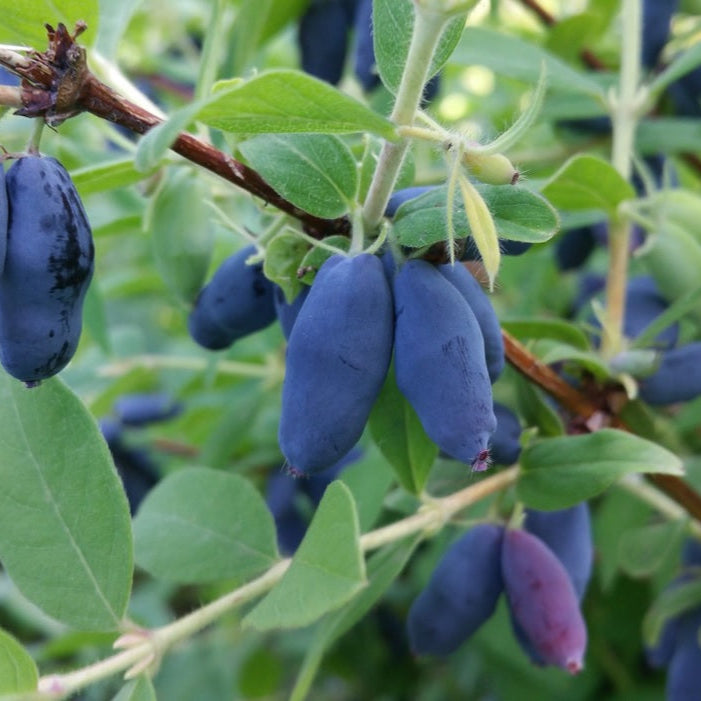The American Fig Company
Czech 17 Honeyberry
Czech 17 Honeyberry
Couldn't load pickup availability
The Czech 17 Honeyberry, Lonicera caerulea var. kamtschatica, is a reliable and productive variety known for its early ripening and rich flavor. Bred in the Czech Republic, this cold-hardy shrub thrives in USDA zones 2 through 7, enduring harsh winters and bouncing back strong each spring.
Czech 17 reaches about 4-6 feet in height and width, making it suitable for small gardens or larger orchard-style plantings. In early spring, it produces small, tubular white flowers that give way to clusters of dark blue berries by mid to late June. The fruit is firm, mildly tart, and excellent for fresh eating, freezing, or using in preserves and desserts.
Though self-fertile, Czech 17 benefits from cross-pollination with another honeyberry variety, such as Borealis or Tundra, to maximize its already impressive yield of 6-8 pounds per plant.
Czech 17 is a low-maintenance plant with high returns—delicious fruit, attractive foliage, and strong disease resistance, all in one tough package.
Latin Name: Lonicera caerulea var. kamtschatica
Site and Soil: Prefers full sun to partial shade. Grows well in well-drained loamy, sandy, or clay soils. Tolerates a range of pH levels but does best in slightly acidic conditions (pH 5.0–7.0).
Pollination Requirements: Self-fertile, but cross-pollination with another variety improves fruit set and yield.
Hardiness: Extremely cold-hardy to USDA zone 2. Withstands temperatures as low as -50°F and requires winter chill to set fruit.
Bearing Age: Begins producing fruit within 1–2 years of planting. Reaches full production around year 4.
Size at Maturity: Typically 4–6 feet tall and wide. Can be pruned to shape or manage size.
Bloom Time: Flowers in early spring, often before the leaves emerge. Flowers are small, white, and lightly fragrant.
Ripening Time: Berries ripen in mid to late June, often earlier than most blueberries.
Yield: Produces 6–8 pounds of fruit per plant at maturity, with higher yields when pollinated with a compatible cultivar.
Pests & Diseases: Generally pest- and disease-resistant. May require bird protection as the berries ripen.
USDA Zone: 2–7. Performs well in cold climates with sufficient winter chill. Not recommended for warm-winter areas lacking chill hours.
Share

Featured Review
"Great! Great! Great! Great! Great!"
✰✰✰✰✰
- JARREN -
